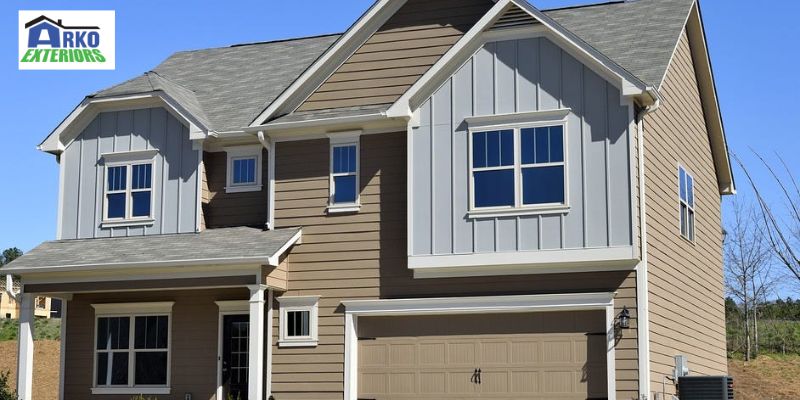Siding refers to the protective covering that is installed on the exterior walls of a building. It is designed to protect the building from the elements, such as rain, wind and sun, as well as to enhance its aesthetic appeal. Siding comes in a wide range of materials, including wood, vinyl, aluminum, fiber cement and brick. Each material has its own unique advantages and disadvantages, such as cost, durability and maintenance requirements. Siding installation can be done by professionals or as a DIY project, depending on the skill level of the homeowner. Overall, siding is an important component of a building’s exterior that provides both functional and aesthetic benefits.
Siding installation can be an exciting home improvement project, but it’s important for homeowners to exercise caution during the process. A careful approach can save them from costly mistakes and ensure that the installation is successful.
When installing siding, homeowners need to pay close attention to several factors, including the weather, the quality of the materials and the skill level required for the job. Rushing through the process or using low-quality materials can lead to costly repairs and unsightly results.
Moreover, improperly installed siding can lead to moisture buildup, which can cause serious damage to the structure of the home. This can result in costly repairs, and, in some cases, even a complete replacement of the siding.
To avoid these potential pitfalls, homeowners should take the time to research the materials and techniques involved in siding installation, as well as hire a professional contractor if necessary. It’s also important to check for any local building codes or regulations that must be followed.
What Is Horizontal Siding?

Horizontal siding comes in a variety of materials, including vinyl, wood, fiber cement and aluminum. Each material has its own unique advantages and disadvantages, such as cost, durability and maintenance requirements.
Horizontal siding is installed by attaching the panels to the exterior walls of the building in overlapping rows. This creates a horizontal pattern that can be customized with different colors and textures to achieve a desired look.
One of the advantages of horizontal siding is that it is easy to install, which can save time and money on installation costs. It is also relatively low maintenance, requiring only occasional cleaning to maintain its appearance and functionality.
Overall, horizontal siding is a popular choice for its versatility, durability and aesthetic appeal. It can be customized to fit the unique style of any building, making it a practical and attractive choice for homeowners and business owners alike.
What Is Vertical Siding?

Vertical siding is a type of siding that is installed on the exterior walls of a building in vertical rows. It is a less common choice than the horizontal siding, but it can provide a unique look to a building and offer several advantages over other types of siding.
Vertical siding can be made from a variety of materials, including wood, vinyl, fiber cement and metal. Each material has its own unique advantages and disadvantages, such as cost, durability and maintenance requirements.
One of the advantages of vertical siding is that it can make a building appear taller and more slender, which can be particularly desirable for homes or buildings with low roofs or wide facades. It can also provide a modern or contemporary look to a building.
Another advantage of vertical siding is that it can be more resistant to wind and moisture damage than horizontal siding, as it allows for better drainage of water and reduces the risk of moisture buildup.
Vertical siding is installed by attaching the panels to the exterior walls of the building in vertical rows. The panels can be customized with different colors and textures to achieve the desired look.
Overall, vertical siding is a unique and attractive option for homeowners and business owners who want to add visual interest to their buildings while also providing protection from the elements. It can be a practical and durable choice that offers several advantages over other types of siding.
How do you choose between vertical siding and horizontal siding?
When choosing between vertical siding and horizontal siding, there are several factors to consider. Here are some important points to help you make an informed decision:
1. Aesthetic Appeal: The first thing to consider is the desired aesthetic appeal of the building. Horizontal siding can create a more traditional look, while vertical siding can provide a more contemporary or modern look. Think about the overall style of your home or building and choose the siding style that best matches it.
2. Height & Width Of The Building: The height and width of the building can also play a role in determining the best siding style. Vertical siding can make a building appear taller, while horizontal siding can make it appear wider. Consider the proportions of the building and choose a siding style that enhances its features.
3. Climate: The climate of the area where the building is located can also be a factor. Vertical siding may be a better choice in areas with heavy rain or high winds, as it allows water to drain more easily and is less likely to lift or shift in the wind.
4. Maintenance: Consider the maintenance requirements of each siding style. Horizontal siding may be easier to clean and maintain, as it can be accessed from ground level. Vertical siding may require special equipment or professional assistance for cleaning and maintenance.
5. Cost: Finally, consider the cost of each siding style. Horizontal siding is generally more common and therefore may be more affordable, while vertical siding may be more unique and come with a higher price tag.
Summary:
Ultimately, the decision between vertical siding and horizontal siding comes down to personal preference, the style of the building and practical considerations such as climate and maintenance requirements. Consider all the factors carefully and choose the option that best meets your needs and budget.
In Blaine, Minnesota, call Arko Exteriors at 763-434-2756 for more information.

